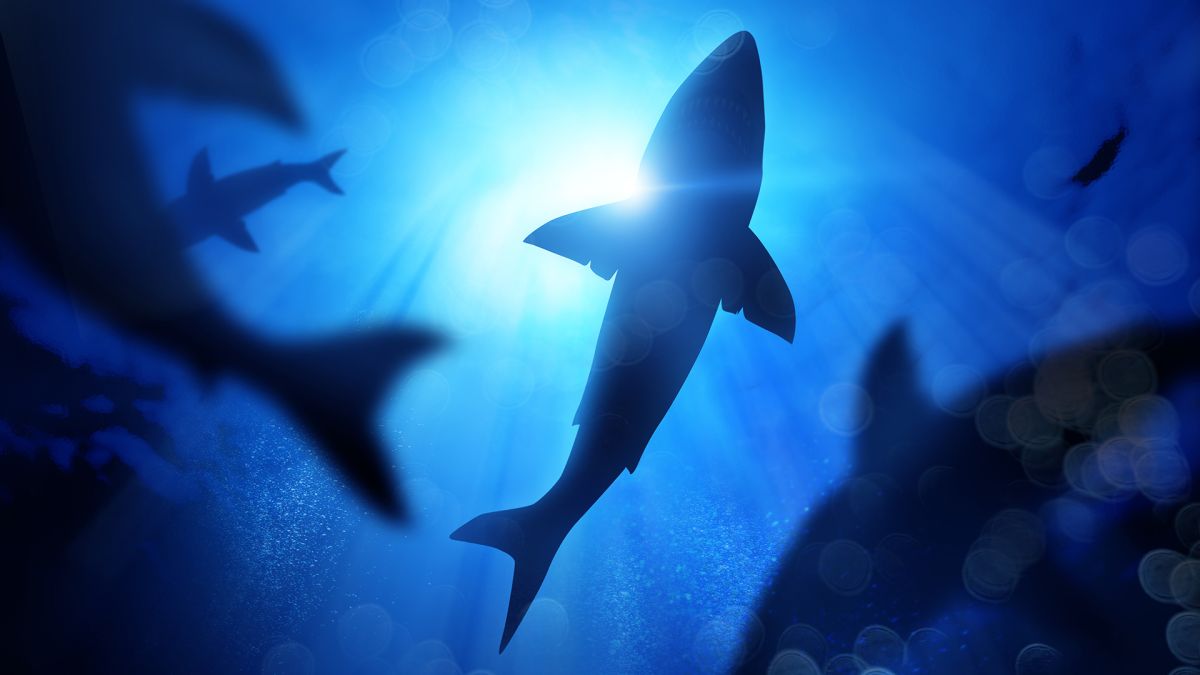Megalodon (Otodus megalodon), one of the largest sharks to have ever lived, mysteriously vanished from the fossil record about 3.6 million years ago. Now, scientists suspect that the massive predator may have been driven to extinction by a rival marine species: great white sharks.
Prior research hypothesized that megalodon’s decline may have coincided with the rise of great white sharks (Carcharodon carcharias), which likely hunted the same prey as their larger cousin, Jeremy McCormack, a geoscientist at the Max Planck Institute for Evolutionary Anthropology in Leipzig, Germany, and lead author of a new study about these prehistoric competitors, told Live Science in an email. Supporting this explanation for megalodon’s relatively sudden disappearance were bite marks on the bones of other marine animals; these scars were made by both great whites and megalodon, suggesting that the two species may have competed for similar food resources.
But these bite marks provided only a single snapshot of isolated interactions between predator and prey, McCormack said. To find out if great white sharks truly starved megalodon out of existence would require a more complete survey of both species’ diets.
For that, McCormack and his colleagues looked for clues in the animals’ teeth; they looked not at tooth size or shape but rather at the amount of zinc that was present in each tooth.
Related: What caused this massive megalodon’s mega-toothache?
“Zinc is essential for organisms, as it plays an important role in a wide range of biological processes,” McCormack said. Most importantly, zinc is incorporated into teeth as they grow. When a predator hunts, it ingests minerals and nutrients from its prey. One of those minerals is zinc, which comes in two isotopes (variations of the same element with a different number of neutrons). One zinc isotope is heavier and the other is lighter. Other researchers who previously analyzed animal teeth found that ratios of heavier to lighter zinc isotopes in an animal’s teeth could reveal that animal’s position in a food chain. If teeth contain more of the lighter isotope and less of the heavier isotope, the animal is closer to the top of the food chain in its ecosystem. But if the teeth hold more of the heavier isotope, chances are that the animal is a bottom-feeder. These zinc ratios enable scientists to determine an ancient animal’s trophic position with a great deal of accuracy.
McCormack and his colleagues examined teeth from 20 modern species of fish, including sharks from wild and aquarium populations. The researchers then compared the zinc ratios in the teeth of the living fish with those in teeth from ancient great whites and extinct megalodon.
Great white sharks evolved about 4 million years ago, overlapping with megalodon for approximately 400,000 years, Live Science previously reported. At first, megalodon and great whites occupied separate niches and didn’t compete with one another. But the scientists discovered that zinc ratios in fossil shark teeth documented a shift in that relationship, one that caused them to directly bump fins with one another. In the early Pliocene, or about 5.3 million years ago, some populations of great whites began to shift their position up on the food chain to become top predators themselves, invading megalodon’s territory. This would have meant that the two species were then forced to share resources, with the more efficient hunter driving the less efficient one out of existence.
In addition to competition with great whites, “the extinction of Otodus megalodon could have been caused by multiple, compounding environmental and ecological factors,” the researchers wrote in the study. These factors could have included climate change and the collapse of available food resources in general, in addition to being out-sharked by great whites.
This study was published May 31 in the journal Nature Communications (opens in new tab). (opens in new tab)
Originally published on Live Science.
































